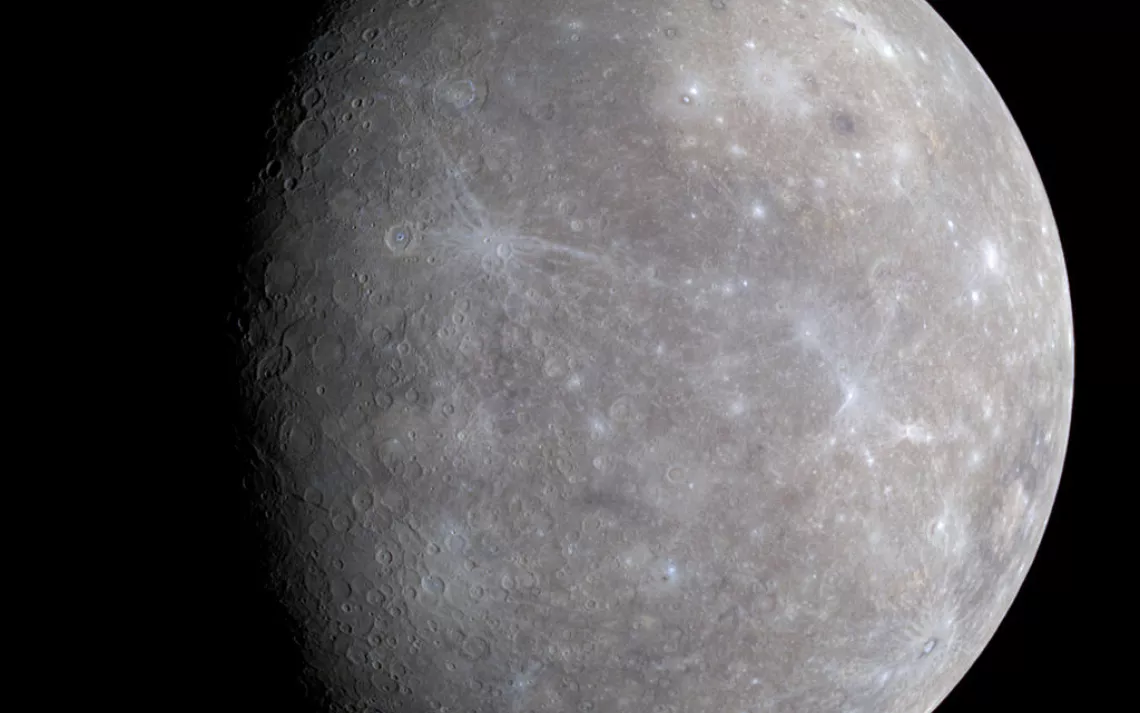April Observing Highlight: Mercury At Its Best

Photo courtesy of NASA
Mercury is the one to watch in April, when the closest planet to the sun makes its best appearance of the year. You’ll be able to see it without the aid of a telescope or binoculars, but with them, you can see its phases.
Like the moon, Mercury shows phases depending on how much sunlight is illuminating its surface. The more “full” Mercury is, the harder it is for us to see on Earth, because it’s positioned close to the bright sun. As Mercury moves farther away from the sun as seen in our sky, its phase shrinks and it grows dimmer, even as it moves closer to Earth.
On April 1, Mercury is 92 percent illuminated and shines at magnitude -1.5. (With regard to magnitude, the lower the number, the brighter the object. The sun shines at magnitude -26, a full moon at magnitude -13, and the brightest star is magnitude -1.5. Most stars and all galaxies are positive numbers.) Try spotting a young moon and Mercury together on April 8. The moon, just a day past new phase and 3.9 percent lit, will be setting in the west that evening right after sunset, and Mercury will shine at magnitude -0.9 a bit to its right.
On April 18, Mercury will reach as far from the sun as it can get when viewed from Earth. This is called greatest elongation. The planet will be 40 percent lit and shining at magnitude 0.1. Inner planets, such as Mercury and Venus, are best viewed at times of greatest elongation when they are farthest from the sun in our sky and give us our best peek at these elusive, rocky worlds.
The moon is absent from the evening sky in the first week of April but reappears after it meets Mercury on April 8. On April 10, the moon will be near the bright star Aldebaran in Taurus. Aldebaran, a fairly close 65 light-years from Earth, has a tiny spacecraft speeding its way, but don’t hold your breath for a close encounter. Pioneer 10, which visited Jupiter in the 1970s, is moving outward and will pass Aldebaran in 2 million years.
On April 14, the moon is just over 5 degrees from the Beehive Cluster, M44, in the constellation Cancer. The stars of the Beehive Cluster can be seen faintly without optical aid. On April 16, the moon gets near the star Regulus, and the next night the moon makes a close pass at Jupiter.
The full moon arrives at 12:24 A.M. CDT on April 22 or 11:24 P.M. MDT on April 21. Unfortunately, this is also the night when the Lyrid Meteor Shower peaks, and the bright moonlight will wash out many of the meteors.
The last adventure of the moon in April is late on the 25th when the moon, at 86 percent lit, can be found near Aldebaran (magnitude 1), Mars (magnitude -1.3), and Saturn (magnitude 0.2). This grouping lies on the edge of the Milky Way, which rises after midnight. On most spring evenings, when you are looking up at the sky, you are looking away from our galaxy and out into deep space.
 The Magazine of The Sierra Club
The Magazine of The Sierra Club







